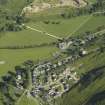Following the launch of trove.scot in February 2025 we are now planning the retiral of some of our webservices. Canmore will be switched off on 24th June 2025. Information about the closure can be found on the HES website: Retiral of HES web services | Historic Environment Scotland
Kilmartin Churchyard
Burial Ground (Medieval), Churchyard (Medieval), Commemorative Stone(S) (Period Unknown), War Memorial(S) (20th Century)
Site Name Kilmartin Churchyard
Classification Burial Ground (Medieval), Churchyard (Medieval), Commemorative Stone(S) (Period Unknown), War Memorial(S) (20th Century)
Alternative Name(s) Kilmartin Parish Church; Kilmartin Village; Lapidarium; Neil Campbell Tomb; War Memorial Plaques And Gateway
Canmore ID 39526
Site Number NR89NW 8
NGR NR 83448 98835
Datum OSGB36 - NGR
Permalink http://canmore.org.uk/site/39526
First 100 images shown. See the Collections panel (below) for a link to all digital images.
- Council Argyll And Bute
- Parish Kilmartin
- Former Region Strathclyde
- Former District Argyll And Bute
- Former County Argyll
Field Visit (27 April 1973)
The cross is at NR 8347 9884 and just to the N are the two crucifix stones. Apart from the medieval gravestones in the mausoleum, there is a group from Poltalloch in a walled enclosure, and many more lying on the surface of the graveyard.
Surveyed at 1:2500.
Visited by OS (JP) 27 April 1973
Desk Based Assessment (1973)
NR89NW 8 83448 98835
For adjacent Kilmartin Parish Church, see NR89NW 85.
NR 834 989. An early cross stands to S of the main entrance to Kilmartin graveyard. There are 2 or more early stones. At the E end of the first railed enclosure - Campbells of Kilmartin - are two later box-tombs; the E end of the second of these is formed from a cut-down slab with a wheel-headed cross on its outer face. Among medieval stones, the churchyard contains a fine crucifix, said by Drummond (1881) to have been brought from a roadside site "1/4 mile from the church" where he was told the socket remained. There is a smaller crucifix beside it, and many gravestones, some collected under a roof by the D o E in the mausoleum of the last Episcopal bishop, Neil Campbell; also many more stones in the ground, some defaced by over-cutting in the 19th c.
J R Allen 1881; M Campbell and M Sandeman 1964
Information from OS.
Field Visit (August 1989)
MAUSOLEUM. A small stone-built enclosure 7m S of the SW angle of the church was roofed by the Ministry of Works in 1956 for use as a lapidarium (infra). It measures 5.3m by 3.5m within 0.75m walls, the side-walls being crenellated with projecting coping-slabs, and each containing a slit-window, while the end-walls were originally flat, but with a raised pediment above the W doorway and a flat -topped projection containing the E window, which preserves a glazing-groove. When it was converted to a lapidarium the inner parts of the side-walls were heightened and gables were formed to carry a glass roof, but it may originally have been open. The door and windows have round-arrised schist dressings which maybe of 17th-century date, but the wall-head was probably rebuilt in the late 18th or 19th century. Above the W door there is a schist panel with a relief inscription within a roughly-sunk frame, incomplete at the right and probably originally a graveslab:
1627 HEIR LYIS MR / NEIL CAMBEL AND CRISTlANE
C[?ARSUEL...]
Neil Campbell, minister of Kilmartin from 1574 to 1627 and bishop of Argyll from 1580 to 1608, married Christian, daughter of Bishop John Carswell (see No. 115), and two of their sons became respectively bishops of Argyll and of the Isles, while a third succeeded his father as minister of Kilmartin. His descendants held the Kilmartin estate until about 1674 (see No. 134) and thereafter that of Auchinellan, and in 1844 it was noted that they retained 'the ancient Caibeal or burial-place of the rectors in the churchyard', and were 'sometimes called by the natives Slioch an Easbuig' (‘descendants of the bishop') (en.11*).
RCAHMS 1992, visited August 1989
[see RCAHMS 1992 No. 68 for a detailed description of 121 funerary monuments in the churchyard, mausoleum and church]
Watching Brief (2002)
Archaeological watching brief undertaken by Scotia Archaeology in Kilmartin village, Argyll in 2002. The watching brief was carried out on the instructions of the West of Scotland Archaeology Service (WoSAS), acting on behalf of Argyll & Bute Council, in response to an application by Scottish and Southern Energy to upgrade the power supply to a new housing development on the east side of the village.
Desk Based Assessment (January 2009)
In January 2009 Kilmartin House Museum conducted a Desk Based Survey (DBA) on the church and graveyard of Kilmartin. The aim of the report was to locate and compile all known information on the church with particular reference to the ‘old’ graveyard. The collated information will to be used as a basis for the survey and recording of the gravestones within the graveyard. The project was undertaken in partnership with the Dunadd Historic Graveyard Group, Historic Scotland, the Church of Scotland and Argyll and Bute District Council. The project is part of the Dalraida Project which is the major funder.
Note (24 April 2024)
The three carved stones in the care of Historic Environment Scotland (RCAHMS 4, 87, 89) formally referred to as the Kilmartin Crosses have been permanently relocated from Kilmartin Church (Canmore ID 39532) to Kilmartin Museum (Canmore ID 134395).
Information from HES (SCS) 24 April 2024”














































































































































































































